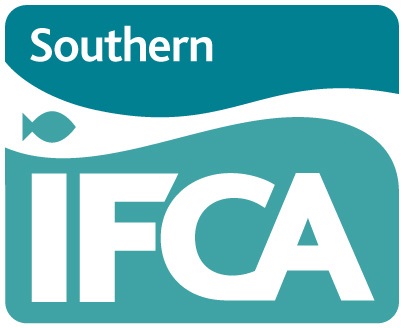Net Fisheries
Net fishing takes place across the Southern IFC District using a variety of different methods. The main netting methods used can be broadly separated into three categories:
Fixed nets
A fixed net is a type of gill net which is held in situ, at any point along its length, by an anchor, or any other object including the seabed. Fixed nets are generally shot along the tidal axis and fish most effectively on the slack part of the tide. Due to the net being fixed, fish may encounter the net either by active swimming or by passive movement with water currents.
Drift nets
A drift net is a type of gill net that is set without an anchor and allowed to move freely with the tide or current. They are often set to target a particular section of the water column. The mesh size, length of net and soak time used will reflect the target species (including the minimum conservation reference size of that target species) allowing drift netting to be a selective method of fishing. Fishers who use drift nets are experienced in knowing where and when to set the nets to maximise interaction with their target species and minimise bycatch. Drift netting takes place across the District targeting a number of species including grey mullet species, skates and rays, herring and sole.
Ring nets
A ring net is a type of gill net set in a circle, either in open water where the circle is completed, or close to the shore where a U-shape may be formed with the net set against the shore. As with drift nets, the mesh size is dictated by the target species with a common range from 3 5/8 to 4 inches. Ring nets are constantly attended and are hauled only a short time after deployment. Catch is commonly removed from the net whilst it is being hauled. Ring nets are primarily used to target shoals of fish such as grey mullet species and it is noted to be a selective method of fishing as fishers will not set the net speculatively but rather only when the presence of a shoal of fish has been identified.
Descriptions of net types are taken from Officer experience, engagement with fishers and definitions provided in Potter and Pawson (1991)
1
.
1
Potter, E. C. E. and Pawson, M. G. 1991. Gill Netting.
Ministry of Agriculture, Fisheries and Food, Directorate of Fisheries Research, Laboratory Leaflet Number 69,
pp. 34
In 2021, 260 tonnes of fish were landed from ICES areas 29E7, 30E7 and 30E8 having been caught using nets
2
. The top fish species landed were: Sole, Mullet, Plaice, Cuttlefish and Thornback Ray.
2
Data from the Marine Management Organisation, 2022. ICES areas 29E7, 30E7 and 30E8 cover the majority or the Southern IFC District and some areas outside.
